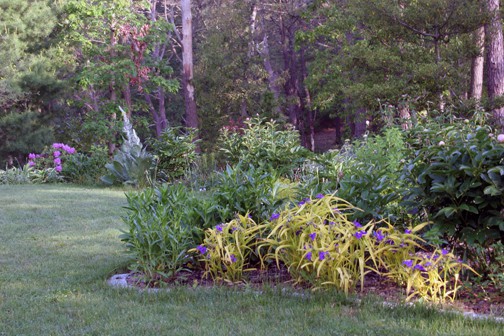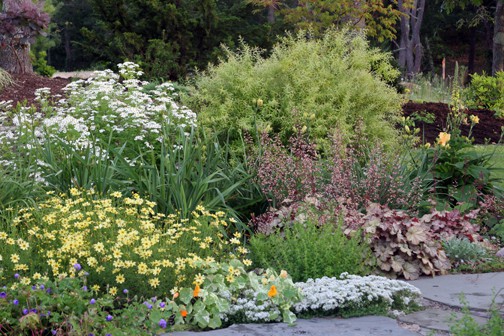Report From PIA – February 20
When I was preparing to leave after my talks at Sullivan Renaissance today, a woman stopped me in the atrium. “Can I ask you a question?” she said. “What do you think of horse manure?”
I told her that I thought that any manure was great for the garden, and that my husband and I have used horse manure in our gardens for years. “Our new flower beds at Poison Ivy Acres were solely amended with horse manure,” I told her, “and I think that it’s the main reason all of the plants grew so quickly.”
She sighed, and said that it was sometimes frustrating to talk with other gardeners in her area because they were so set in their ways and opinionated. She went on to say that when she asked about new plants, her interest was met with instant replies of, “You can’t grow that here.” When she said that she knew of a great source of composted horse manure, the response was, “You can’t use that…there are too many weed seeds.”
I get this comment from other gardeners all the time. My answer is to say that there are weed seeds everywhere. Most weed seeds remain viable for over fifty years, waiting for the conditions that trigger their germination. Yes, some may come in with horse manure, but they also come in with the wind, rain run-off and as hitchhikers on animals.
As gardeners, we need to do what we can to control weeds, and this usually means mulching early in the season and hand-pulling as often as possible. In my experience, the benefits of horse manure, which is usually free, is worth coping a few extra weed seeds in my beds.
The question this woman asked in the atrium went beyond horse manure and weeds, however. At the heart of her query was the very human tendency toward being intransigent. Once we learn something, it is very easy, tempting and comfortable to decide that we know the correct way, the only way, and the best way.
I am not immune to this, by any means. And yet the garden constantly asks us to be flexible, and know that sometimes things succeed against all odds. When we see a plant flourishing in a crack in the cement or asphalt, how can we continue to insist that soil needs to be rich and loose in order for plants to do well? When we learn that research shows that our long-cherished practice of amending soil around a new tree actually works against the development of that plant, how can we maintain that these old practices are still appropriate?
All of life keeps telling us to be adaptable, but we are constantly tempted to believe in a singular approach. May we all strive to remember that in and out of the garden, there are many, many ways to succeed.

The lake-side perennial bed was first tilled, then covered with a three inch later of composted horse manure, and then tilled again. Once planted, the small mail-order perennials were soon leaping out of the ground. Everywhere I dig in this garden I find dozens of earth worms. I mulch all my beds, and have minimal weeds.


